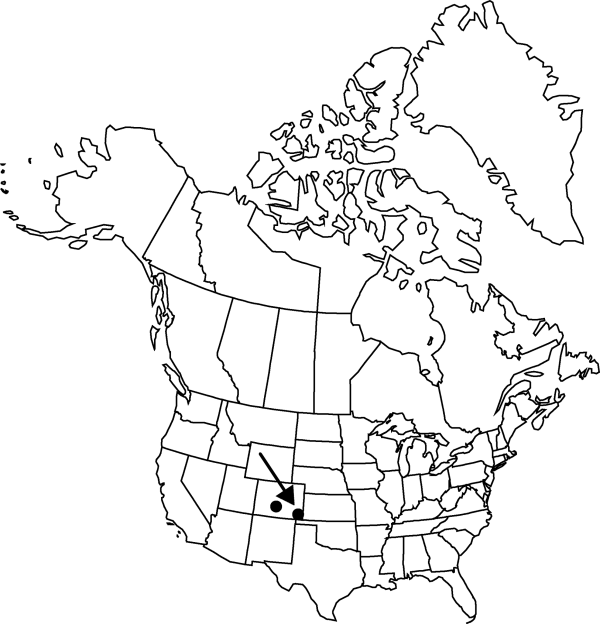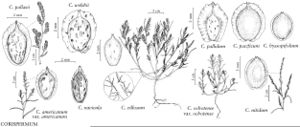Corispermum hyssopifolium
Sp. Pl. 1: 4. 1753.
Plants branched from base (rarely slightly above base), 10–35(–55) cm, densely to sparsely covered with dendroid or stellate hairs, becoming glabrous. Leaf blades linear-lanceolate or linear; usually plane,1.5–3.5(–4) × 0.2–0.4(–0.5) cm. Inflorescences compact, usually not strongly condensed at apex, occasionally interrupted near base, linear, oblong-linear, or indistinctly clavate-linear. Bracts ovate or ovate-lanceolate (rarely narrowly ovate-lanceolate to ± lanceolate), 0.5–1.5(–2) × 0.3–0.7 cm. Perianth segments 1(–3). Fruits brown, dark brown, or deep olive green, usually without spots and warts, broadly elliptic, prominently convex abaxially, usually plane or slightly concave adaxially, obovate-elliptic, or ± orbiculate, broadest near middle (rarely slightly beyond middle), 2.2–3.2 (–3.5) × 1.7–2.8 mm shiny wing (when present) translucent at margins, 0.1(–0.15) mm wide, margins entire, apex rounded.
Phenology: Flowering summer–early fall.
Habitat: Sandy waste places, roadsides, shores
Elevation: elevation not known
Distribution

Colo., se Europe, w Asia.
Discussion
In addition to the key characteristics, Corispermum hyssopifolium is distinguished by having style bases short, barely exposed over the edge of wing and fruit surfaces which are glabrous and shiny.
The application of the Linnaean name Corispermum hyssopifolium is problematic. The standing lectotype (C. E. Jarvis et al. 1993; I. C. Hedge 1997) and traditional circumscription of C. hyssopifolium (as understood by M. M. Iljin 1936; P. Aellen 1961, 1964; and many others) are accepted here.
No unquestionable specimens of Corispermum hyssopifolium sensu stricto are known from North America. A collection from Colorado and some collections from Missouri approach this species most closely (S. L. Mosyakin 1995). However, their fruit morphology suggests that they are either members of the native Asian and North American group centered around C. pallasii, or resulted from hybridization between C. hyssopifolium and native representatives of subsect. Pallasiana.
The name Corispermum hyssopifolium has been misapplied to the majority of species of the genus.
Selected References
None.
